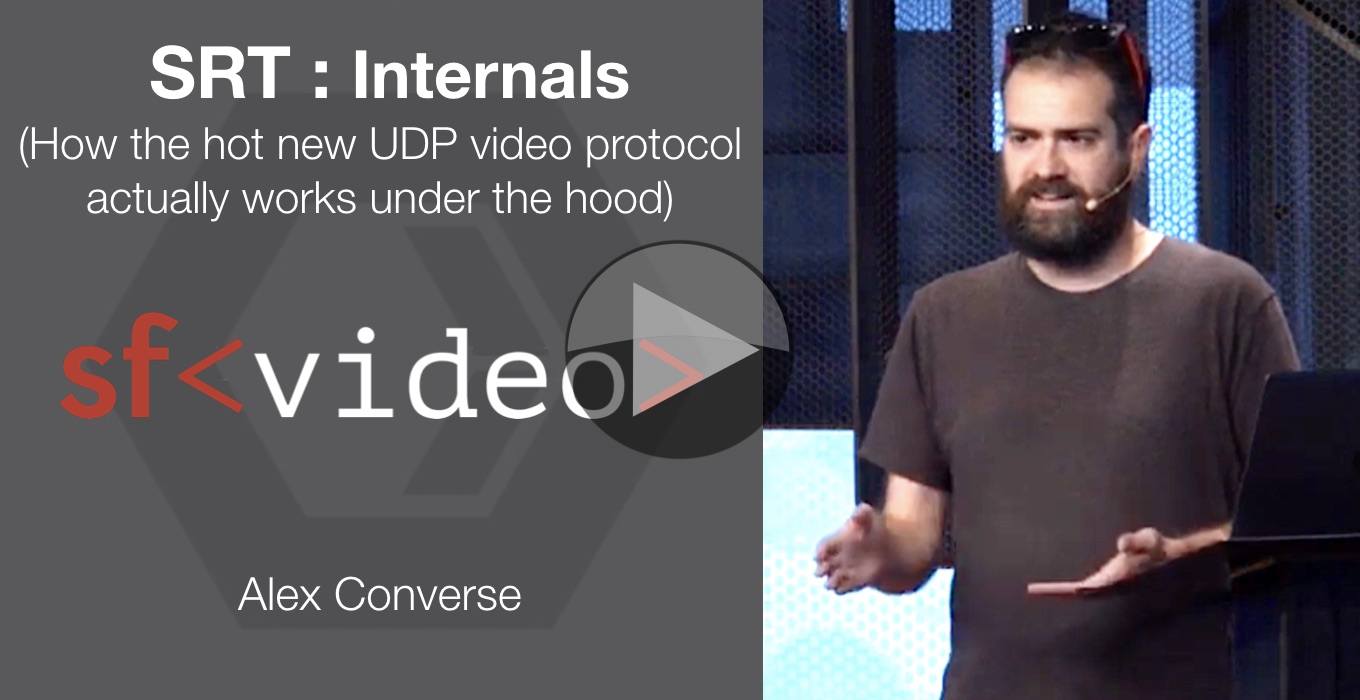In the west, RTMP is seen as a dying protocol so the hunt is on for a replacement which can be as widely adopted but keep some of it’s best parts including relatively low latency. SRT is a protocol for Secure, Reliable Transport of streams over the internet so does this have a role to play and how does it work?
Alex Converse from Twitch picks up the gauntlet to dive deep into the workings of SRT to show how it compares to RTMP and specifically how it improves upon it.
RTMP fails in many ways, two to focus on are that the spec has stopped moving forward and it doesn’t work well over problematic networks. So Alex takes a few minutes to explain where SRT has come from, the importance of t being open source and how to get hold of the code and more information.
Now, Alex starts his dive into the detail reminding us about UDP, TS Packets and Ethernet MTUs has he goes down. We look at how SRT data packets are formed which helps explain some of the features and sets us up for a more focussed look.
SRT, as with other, similar protocols which create their resilience by retransmitting missing packets, need to use buffers in order to have a chance to send the missing data before it’s needed at the decoder. Alex takes us through how the sender and receiver buffers work to understand the behaviour in different situations.
Fundamental to the whole protocol is packet the packet acknowledgement and negative acknowledgements which feature heavily before we discuss handshaking as we start our ascent from the depths of the protocol. As much as acknowledgements provide the reliability, encryption provides the ‘secure’ in Secure Reliable Transport. We look at the approach taken to encryption and how it relates to current encryption for websites.
Finally, Alex answers a number of questions from the audience as he concludes this talk from the San Francisco Video Tech meet-up.
Speaker
 |
Alex Converse Streaming Video Software Engineer, Twitch |


